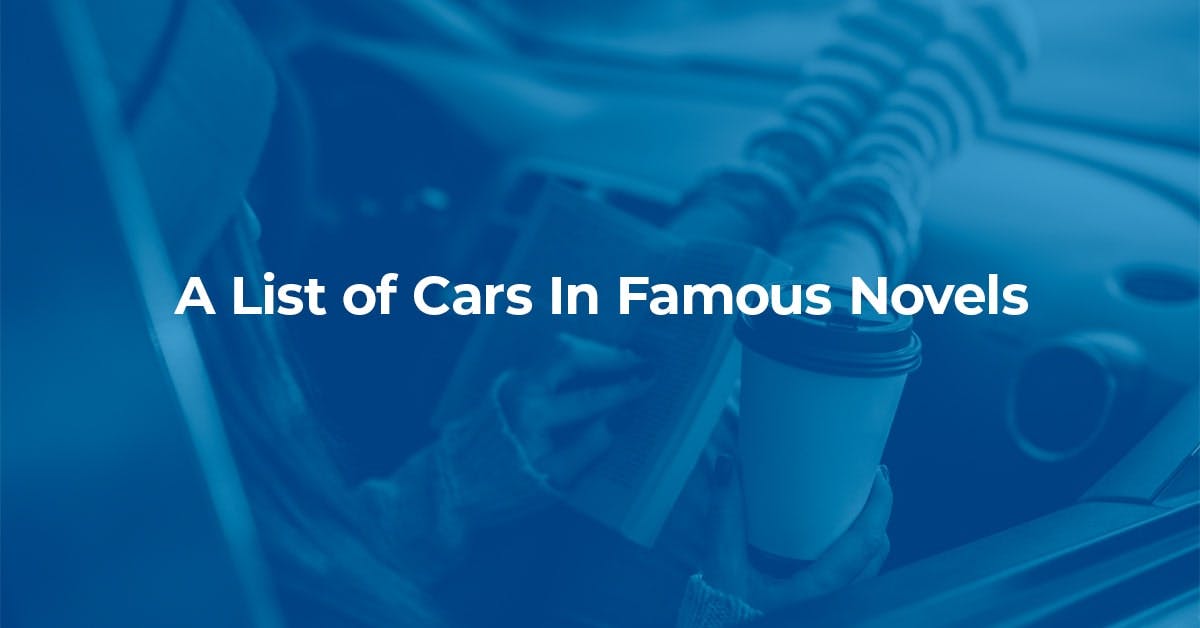Cars are an essential part of our lives – it is only natural that they appear in fiction. But in some novels, cars are more than just something a character owns.
They can be used as a literary device, to give depth to a character, and in some novels, the car itself can be seen as its own character.
Here are five novels that use cars as a key focus. Be sure to add them to your reading list!
Page Contents
Christine - Stephen King (1983)
The king of horror proves he can make just about anything terrifying – including your own car. The novel follows high-schoolers Arnie and Dennis, who come across a 1958 Plymouth Fury named Christine being sold for $250, by an elderly man.
As Arnie begins to spend time restoring the car, strange things begin to happen, such as being able to fix herself and mysterious car-related deaths around the town. As the story progresses, Christine becomes eviler by the page, leading to gruesome murders and frightening mysteries.
On top of the fact King manages to turn one of the most normal everyday items into a scary, bloodthirsty monster, he also proves that characters don’t always have to be humanoid. Christine starts as Arnie’s belonging, but by the end of the novel, she is her own character entirely – a refreshing take on the horror genre he arguably pioneered.
Christine is a well-paced fright fest guaranteed to make you think twice about buying a used car. Maybe you should get those peculiar creaking noises coming from your suspension looked at after all…
Fear and Loathing In Las Vegas - Hunter S Thompson (1971)
‘We were somewhere around Barstow on the edge of the desert when the drugs began to take hold,’ may be one of the most famous opening lines in journalism – and for good reason, as what followed birthed the entire genre of ‘Gonzo Journalism’.
Hunter S Thompson takes his alter ego Raoul Duke and sends him on a crazy adventure, speeding through the Nevada desert in a huge Chevy convertible nicknamed The Great Red Shark, chasing the American Dream.
The Great Red Shark symbolizes everything the American Dream stands for. It is loud, big, and fast – representative of what Raoul and Dr Gonzo are chasing.
In 1998, the novel was adapted into a film starring Johnny Depp, and the car used during filming was the author’s very own Chevrolet Impala, which had been gifted to him twenty years after the publication of the novel.
While not an advertisement for responsible driving (never drive under the influence), Fear And Loathing In Las Vegas was a pivotal point in journalism, as well as a thrilling read.
On The Road - Jack Kerouac (1957)
On The Road is the perfect example of ‘The Great American Novel’, and for good reason. The story follows a fictionalised version of the author, Sal Paradise, and some of the key figures in the ‘Beat Generation’ and their travels, physically and emotionally. Hitchhiking, jazz music, parties, love flings, and exploration are penned beautifully by Kerouac.
A 1947 Cadillac, a 1949 Hudson Commodore, and a 1937 Ford Sedan are just a few of the vehicles Sal sees the states in. The Hudson Commodore that was used in the 2012 film adaptation of the novel is on display in the Beat Museum in San Francisco. It is dirty with the dust of America on its paintwork, and it is not allowed to be washed to preserve the memories of the great American road trip.
But the cars aren’t really the focus of this novel – it is more the journey that the road trip takes you on.
Wheels - Arthur Hailey (1971)
Wheels follows an ambitious executive of a company that plans to make cutting-edge cars, designed to change the lives of drivers everywhere. Alongside submerging you completely within the cut-throat world of the automobile industry, the novel tackles many topical 1970s issues, such as race relations, corporate politics, and business ethics.
When the novel was made into a television miniseries in 1978, a 1968 AMC Javelin was used as ‘the Orion’ and renamed ‘the Hawk’. The rear end of the Javelin was shortened and filled with foam to a new design while the doors were changed to gull-wing types, to better fit the description of the car in the novel.
The novel goes much deeper than the inner workings of a car factory and takes a look at the individual lives of the essential workers that make up the industry. The inclusion of electric vehicles is interesting to reflect on – especially as fifty years later, EVs are taking the industry by storm.
The Great Gatsby – F. Scott Fitzgerald (1921)
Arguably one of the most famous novels of the 20th century, cars play an integral part in both the storyline and the symbolism of the book. Millionaire Jay Gatsby drives a cream Rolls Royce, which is the epitome of luxury – it is described as ‘bright with nickel, swollen here and there in its monstrous length with triumphant hat-boxes and supper-boxes and tool-boxes, and terraced with a labyrinth of wind-shields that mirrored a dozen suns’.
The novel is highly analysed and studied in schools and colleges one hundred years after its publication. The cars in the novel are more than just status symbols – they are a literary device for each character’s personality, social status, and wealth.
In the 1920s, cars were still a relatively new invention, and only the super-rich could afford them, hence them being used to represent much more than a character’s daily run-around.






